SAN ONOFRE NUKE PLANT: NOT WORTH THE RISKS
By Jack Eidt, Director, Wild Heritage Planners
It Can’t Happen Here?
James M. Acton, from the Nuclear Policy Program at the Carnegie Endowment, claimed in The Orange County Register on March 17, 2011 that the argument for nuclear energy remains strong regardless of the obvious lack of “defense in depth” of safety systems at the Fukushima Daiichi nuclear plant. Now let us consider the very clear lack of defense for our neighbor to the south, San Onofre Nuclear Generating Station (SONGS), along the coast near San Clemente.
Southern California Edison (SCE) officials and academic seismologists quickly claimed the quake-tsunami-meltdown-disaster could never happen here. SONGS is designed for a 7.0 temblor and Japan’s 8.9 and the associated tsunami are “highly unlikely.”
Consider, however, a study from 2008 by the California Energy Commission called “An Assessment of California’s Nuclear Power Plants, AB 1632 Report.” It states that the region could experience larger and more frequent earthquakes than had been anticipated when the plant was designed, due to the late discovery of underground “blind thrust” faults. It goes on to recommend further study to characterize the seismic hazard, since less is known about the seismic setting than more fully studied (but still risky) Diablo Canyon in Central California.
The uncertainties are with regard to “continuity, structure and earthquake potential” of the nearby South Coast Offshore Fault Zone, and the faulting that connects to the Los Angeles (Newport-Inglewood Fault) and San Diego (Rose Canyon Fault) regions. There is also the potential for as yet undiscovered blind thrust faults near the plant. Submarine landslides could generate large local tsunamis, a fact not fully understood when SONGS was built. While some consider the 30-foot-high reinforced concrete “tsunami wall” as invincible, others have questioned its durability. A Long-Term Seismic Program is recommended to consider the as yet not-fully-considered.
At Fukushima Daiichi, they also claimed “It won’t happen here.” The latter plant was designed for only a 7.9 quake as the “worst case scenario.” A study from the Electric Power Research Institute admitted: “The Richter scale alone does not capture the dangers or risks posed by specific quakes.” Every redundancy in safety failed miserably.
Spent Nuclear Fuels and Radioactive Waste
SCE uses both spent nuclear fuel pools and dry cask storage. A loss of cooling event could be precipitated by an earthquake or terrorist event; SCE claims they are safe. Yet consider the catastrophic and simultaneous failure of safety redundancy at Fukushima.
The spent fuel pools are considered the Achilles heel at the latter, melting and exposed to the open sky, possibly drained of coolant, releasing significant radiation into the environment. The rush is on to prevent a total meltdown.
The National Academy of Sciences has stated that a “partially or completely drained pool could lead to a propagating zirconium cladding fire and release large quantities of radioactive materials into the environment.” Considering that 63,000 metric tons of pencil-eraser-size ceramic-uranium pellets have been generated as of this year, the risk would be multiple times the damage of Chernobyl.
Taxpayers will pay for waste repositories for the next 100,000 years and huge decommissioning costs would come out of ratepayers’ pockets.
An Alternative Energy Lifestyle is the Only Answer
New nuclear plants are so expensive and risky that Wall Street requires a 100 percent taxpayer-funded loan guarantee. Quite a sum considering a plant would cost anywhere from $12 to $150 billion each. Plants are also uninsurable in the private market, so the taxpayers will fund the majority of any potential accident.
Mr. Acton posits in typical short-sighted economic speak that nuclear fission to boil water is better for the earth than fossil fuels as though the two are the only answer.
What about energy conservation, as well as cogeneration, wind power and cheaper, more–efficient forms of renewable energy? Physicist Amory Lovins from the Rocky Mountain Institute argues that shifting investment of tens of billions of dollars from nuclear into renewable energy would reduce far more carbon per dollar.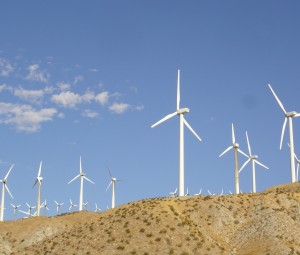
As well, analyses showing nuclear power’s reduction of greenhouse gases don’t take into account the mining and transport of nuclear fuel. Renewable sources are often faulted for not supplying a constant source of energy, but energy storage systems could become more economical with further investment in the technologies.
What about a lifestyle makeover: transit, buses, bicycles, and no SUVs? What about getting most of our energy from rooftop solar connected together is a vast distributed grid? Makes the plug-in electric car fully operable, cutting oil and nukes out of the game. Solar power at present is more expensive than coal. Yet by investing today in a comprehensive system, and accepting that constant access to unlimited power is unsustainable to the earth, we can re-create our future and protect the already-warming climate from further increases of heat-trapping carbon.
Decommission SONGS – Invest in Renewables Today
San Onofre was designed in the 1950s, constructed in the 60s with the intention of eventual decommission in 2013. Endless government lobbying advocates pushing that date toward 2020 and beyond. Time to use common sense and consider the long-term in saving the planet and ourselves from Geiger counters and potassium iodide.
SONGS end-date: 2013.




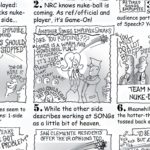
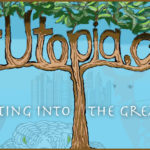
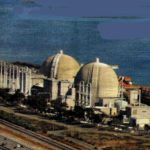
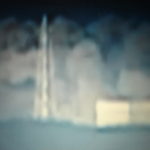






I would like to know the names of the legislators endorsing nuclear projects,dependency and funding resources for new plants projectes and those underway.
Global embargo of nuclear usage by every person is my vision of life continuing.
What is not to get about nuclear?